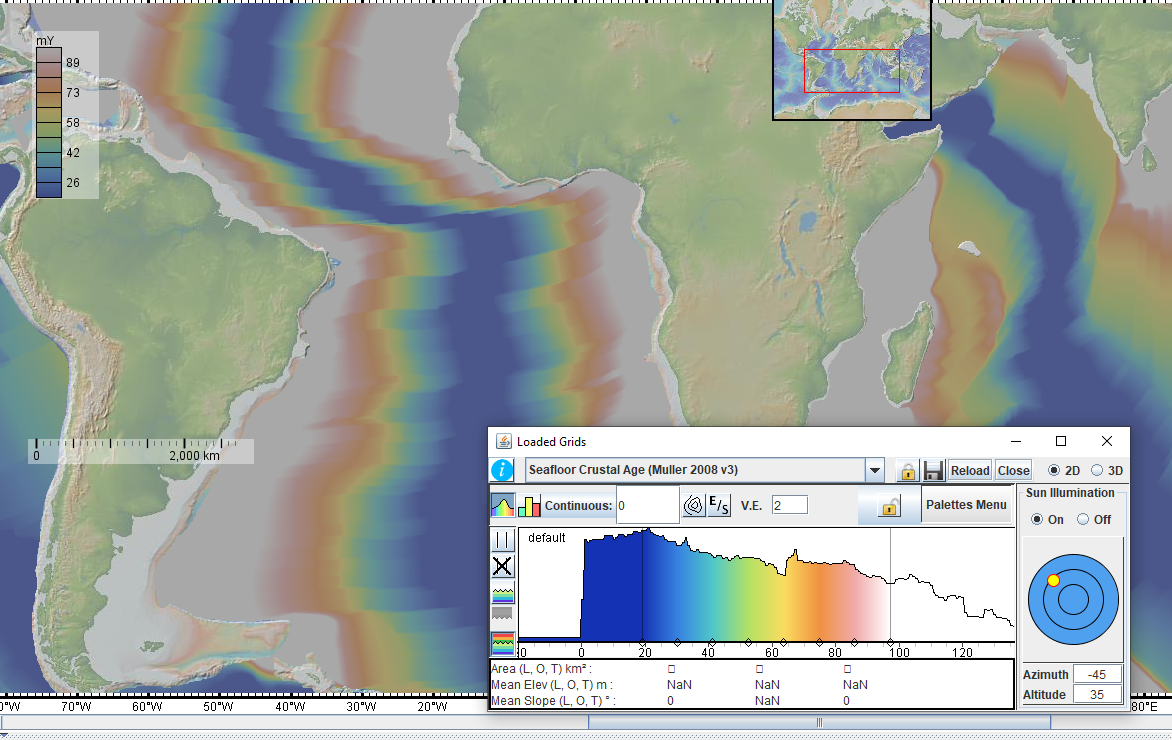Understanding Seafloor Spreading Lab

NOTE: Make sure your computers can run Java-based software. Inside the preview, you can test the program out by clicking on the first link. This program will not work with Chromebooks as they can't run Java.
In this digital seafloor spreading lab, students will use an online mapping program that has mapped the ocean floor. Students will discover that the ocean floor is younger near the middle of the oceans and gets older as you move to the shorelines. Students will read about Hess and his mapping of the ocean floor. An age profile chart will be used so that students can visually see the ages of rock getting progressively older. They will learn to read this profile chart and calculate the rate of seafloor spreading in mm/y based on data that they collect. They will search the globe for the oldest ocean rocks and hopefully have an idea as to why they are that old or young compared to others.
Toward the end of the activity, students will watch a short video about the Earth's Magnetic pole reversals and answer a few questions based on that video.
This assignment also follows reading and discussion that can be found at http://earthscience.xyz/SeaFloorSpreading
